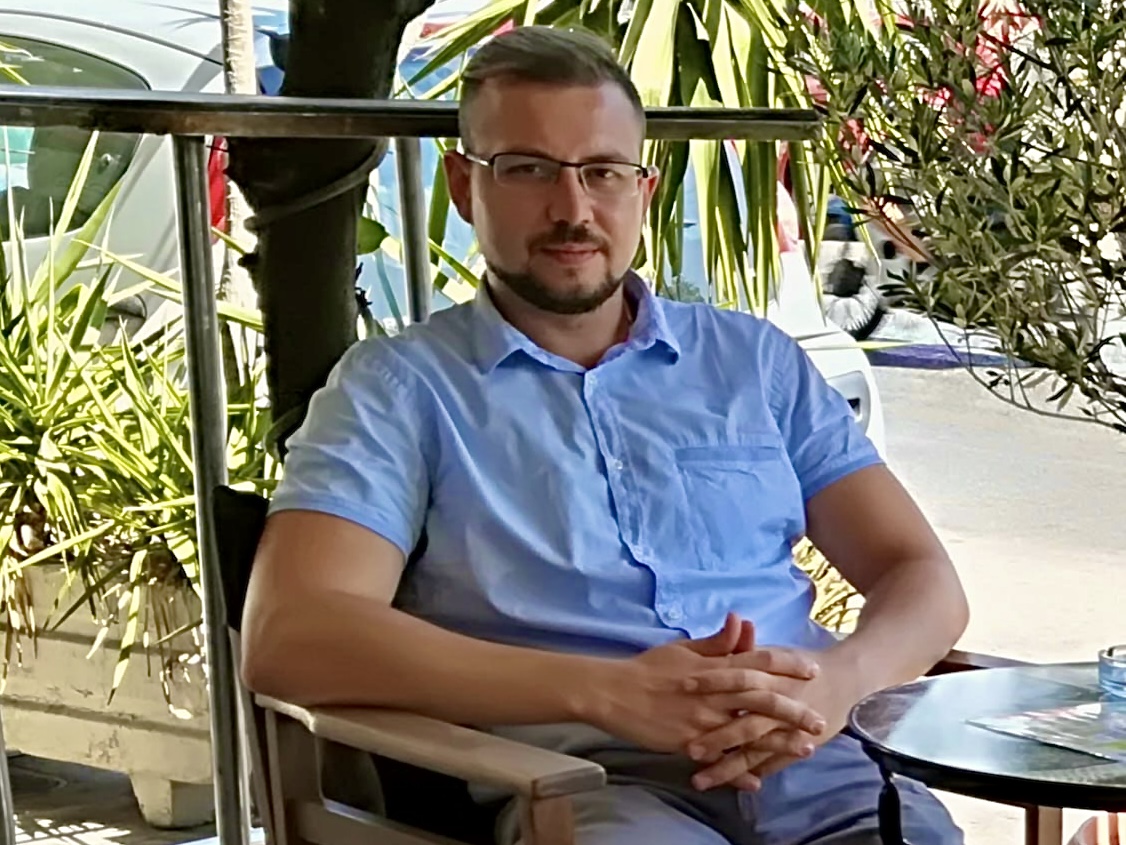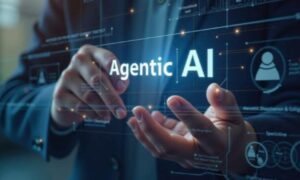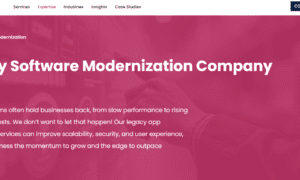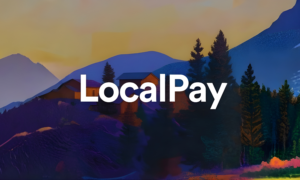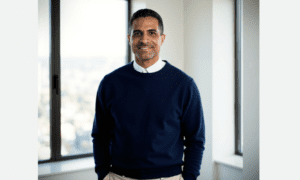As The International Maritime Organisation prepares for its landmark 110th Maritime Safety Committee session, automation has become the hottest topic in shipping circles. Industry giants like Rolls-Royce are already conducting trials of autonomous vessels in Nordic waters, with executives boldly declaring, “The technology is here!” Yet amid discussions about future autonomous ships, a more immediate crisis looms – the growing shortage of qualified maritime officers, with BIMCO reporting a deficit of 17,000 officers that threatens the industry’s stability.
While many focus on tomorrow’s unmanned vessels, tech entrepreneur Dmytro Afanasiev has quietly revolutionized traditional industries by applying artificial intelligence to solve today’s most pressing operational challenges. As founder of Crew Recruitment Services, he built one of Ukraine’s largest maritime recruitment companies with a unique distinction — it’s the only private firm authorized to employ Filipino seafarers, a significant achievement given the Philippines’ restrictive legislation. His “smart recruitment” system has helped the company reach placement milestones faster, reducing candidate search and preparation time by almost 50%, and has already helped place almost 10,000 specialists on international vessels, demonstrating AI’s practical benefits long before autonomous ships become commonplace. Afanasiev’s technological vision extends far beyond the maritime world. His SaaS solution Dentist Plus, features an innovative interactive dental formula with over 500 clinics onboarded across three continents. Back in 2017, he launched Dentist24.online — one of the first AI-based solutions for dental clinic inventory management and predictive ordering, proving how artificial intelligence can transform even the most specialized professional environments.
In this exclusive TechBullion interview, Afanasiev shares insights on identifying digitization opportunities in unexpected places, overcoming resistance to innovation in traditional sectors, and his strategies for building technology companies specifically structured for successful exits — having already sold Dentist Plus to a pharmaceutical leader in Kazakhstan.
Your projects cover different industries, but what unites them is your approach to optimizing business processes with technology. How do you determine which industry is ready for digital transformation, and what steps do you take when entering a new industry to understand its specifics and pain points quickly?
I look at it through the prism of the industry’s “information maturity.” Usually, the most promising areas for digital transformation are those with a significant amount of data, but it is being used inefficiently.
I followed a certain methodology when I made a smooth transition from being a seafarer to becoming a co-owner of a recruitment company with CRS in 2007 and then later the dental industry with Dentist Plus in 2015. First, I immersed myself in the business processes from the inside — talking not to management but to the rank and file. Besides hands-on experience, I also talked with colleague recruiters who were literally working with paper resumes of seafarers and sending their documents by fax.
Then I identified “pain points” in the marine industry, which were the low speed of document processing and the high risk of errors when checking certificates. In dentistry, it was difficult to manage consumables balances and plan purchases.
The industry is ready for digital transformation when transaction costs due to inefficient processes become critical. And it is important to remember that no one needs technology for technology’s sake. What is needed is a solution that significantly simplifies the lives of end users.
Dmytro, Crew Recruitment Services had become one of the largest private recruitment companies in Ukraine and the only one with the right to employ Filipino seafarers. How did you manage to grow so quickly in such a competitive market that had been established for decades?
I think it was largely because I started this business in my early 20s, while my competitors’ average age was 35+. I looked at things differently and immediately brought many accessible technological innovations to the industry, new ways of searching for and communicating with clients, and created our own digital database early on.
The maritime recruitment field was quite rigid in its processes, dominated by veterans who had been operating the same way for decades. When others were still using paper files and rolodexes, we were building digital systems that allowed us to work faster and more efficiently.
And, of course, none of this would have been possible without persistence, hard work, and a first-class team. We assembled younger professionals who were tech-savvy and open to new approaches, which gave us a significant advantage in adaptability and implementation speed.
As part of CRS, you have developed an intelligent recruiting system that has helped employ almost 9,500 professionals. Tell us about the technological challenges you faced in handling big data internationally and how you overcame them.
In 2013, we began developing a system to optimize seafarer recruitment processes, which we finally implemented in 2016. Its functionality includes:
A database of seafarers with detailed candidate profiles: work experience, certificates, bio information, and a global vessel database that was constantly updated and synchronized with seafarers’ work experience.
The main criterion for seafarer recruitment is sufficient experience. Experience appears as a list of contracts with technical details of the vessels on which the person worked. Since there are more than 30 types of vessels and more than 10 types of engines, it’s important for the shipowner that the seafarer’s experience closely matches the shipowner’s vessel.
Our system could automatically detect errors in vessel names and technical details. Thanks to synchronization with the global vessel database and our algorithms, the system itself determined where the seafarer made a mistake in their work experience and inserted the correct values.
Regarding fake experience: Due to the large number of seafarers, about 200,000 in our system at that time, we could, by comparing with the experience of seafarers on the same vessel during the same period indicated by a “fake” seafarer, suggest that the experience was falsified.
The rest of the functionality included the ability to upload specific certificates for each seafarer, for some positions, the number of certificates can reach up to 30, send advance notifications about expiration dates, a payroll system for calculation and payment of salaries to seafarers, and automatic completion of all necessary documents for hiring a seafarer, boarding a ship, deregistration, visa purposes, and flag documents.
In 2017, you went further and created Dentist24.online, where you were one of the first to apply AI to stock management in dentistry. In practice, how did you separate the real benefits of AI from marketing hype, and which business processes proved most suitable for automation with AI?
We took a very pragmatic approach — technology only makes sense if it solves a real problem. In dentistry, this problem turned out to be forecasting material consumption. Clinics were constantly faced with the fact that some items suddenly ran out while others were lying dead weight. We noticed a clear correlation between services and materials — certain procedures always require a certain set of consumables.
Two areas worked really well — forecasting consumption and automating orders. And you know, there was nothing supernatural — just data analysis, which would have had to be done manually before.
We used a simple criterion to separate the real benefit from the hype: saving the client money and time. Automating the forecasting of material consumption gave a concrete result — a 20-30% reduction in stock on hand while reducing the shortages of the required materials.
You must have encountered resistance to change when developing innovative solutions, especially in conservative industries. What strategies have you used to overcome this resistance, and how have you convinced customers and partners of the value of technological innovation?
I quickly realized the main rule – you don’t have to change everything at once. We always started with the most painful but localized problem.
For example, in 2015, dentists in Ukraine and the CIS had a major pain point: they lacked a convenient tool for online patient booking and appointment reminders. After implementing this for our first clients, we began adding more and more modules.
Similarly, with the seafarer database. In 2012-2013, we started getting lost in the huge number of seafarers we had already employed and an even larger number of candidates, tens and hundreds of thousands, whose resumes we kept in Word and Excel documents sorted into folders on our desktop. So we first created a convenient database where the data from Word migrated to our structured database.
You have successfully sold Dentist Plus to a pharmaceutical leader in Kazakhstan. How have you structured your technology companies with a potential sale in mind, and what key elements of the business made your solutions particularly attractive to buyers?
I have never created companies specifically for sale, but I have always structured them to be “saleable.” It’s like renovating an apartment — even if you don’t plan to sell, it’s better to do it so that you won’t have to redo it later.
In October 2017, Dentist Plus was sold to an unnamed pharmaceutical holding in Kazakhstan. The sum of the deal was not disclosed.
In Dentist Plus, our main trump card was the interactive dental formula – it has really become a standard in the industry, and this attracted the Kazakhstani buyer. In Crew Recruitment, the right to employ Filipino seafarers stood out to us – it was a serious asset.
In each case, I tried to ensure that the business had three strong elements: unique technology, a good team, and a stable revenue stream. These elements made the companies attractive to customers.
In parallel with technology projects, you invested in a construction company in Nigeria, where commercial facilities and socially important infrastructure — a school and a church — were built. How has this experience influenced your vision of technological entrepreneurship and its role in the sustainable development of society?
You know, Nigeria has been a great school of life for me. When you build in a country with unstable infrastructure and many social problems, you start to look at technology very differently. I realized a simple thing: people don’t benefit from technology that serves no practical purpose. When we were building a school in Nigeria, I saw how even simple solutions can radically change people’s lives. This greatly influenced my approach to technology projects. In software development, we often forget about the real world – that there are people who need our products to help solve specific problems.
You were implementing AI solutions years ago when most companies weren’t even thinking about artificial intelligence. Now it’s become a major trend. What do you see as the next wave of transformation, and which areas will experience the most dramatic changes?
If we talk about the future, I see huge potential in automating routines, especially in document processing. According to my estimates, up to 50% of working time in most companies is spent on tasks that can be automated now. The industries with clear rules and large amounts of data – logistics, finance, insurance – will see the most changes.
You have worked with different technologies and in different industries – from recruiting to medicine. What little-noticed technological trends today, in your opinion, will become the defining trends for business in the next 5 years? In which traditional industries do you see the greatest potential for digital transformation?
The most underrated trend today is not any particular technology but integrating different systems. Most companies have already implemented basic digital solutions, but they often exist as separate islands. The future lies in platforms linking these islands into a single ecosystem.
As for traditional industries, I see huge potential in agriculture. It is a huge industry with many inefficient processes. Imagine if you could accurately predict crop yields or optimize the use of resources when growing crops. Another promising area is construction. I have seen this industry from the inside in Nigeria, and I can tell you that a lot of things are still done by eye.
Ultimately, the best opportunities always lie where technology can address a real problem or inefficiency. Believe me, there are many more such areas.

